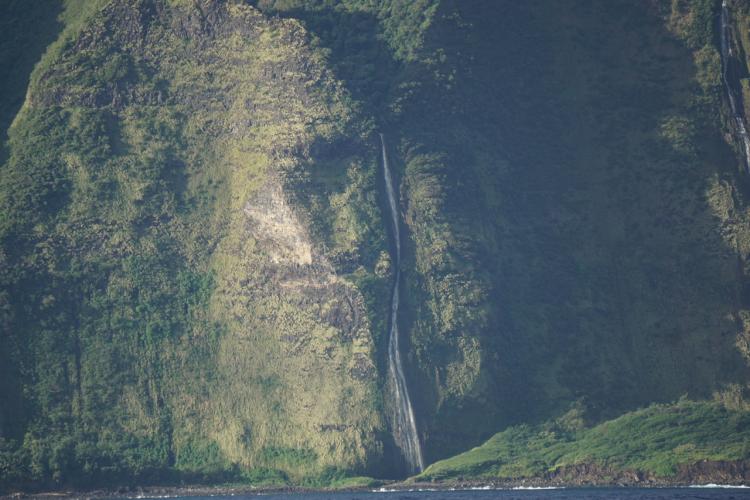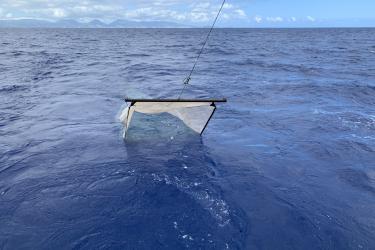It all started when the chief scientist simply asked if I would be interested in participating in a bottomfish research project aboard the NOAA Ship Oscar Elton Sette for 13 days. When I began my internship as a project manager at NOAA, participating in a scientific research mission seemed unlikely, so I was ecstatic to be offered an opportunity to work at sea. My immediate reply was total commitment with a promise to complete any tasks necessary to participate.
Fast-forward 2 weeks, to the day I boarded the ship. I consulted every source available to gauge the packing list, living conditions, and pace of operations. Boarding the ship was similar to moving into a new dorm, apartment, or military barracks. You are looking for the place to sleep, eat, and do laundry. Members of the team were my tour guides, so they helped me find my bunk, the mess, and the laundry room. As the ship departed, we began emergency drills. I found my “gumby” survival suit, all my equipment, and the proper place to report. Time for dinner. There was a wide variety of food and drinks. Tea, juice, water, salad, chicken, and dessert.

Waking up on the first morning, my mission for the day was to catch bottomfish and bring them back to the ship for analysis. First up, getting on the small boat. Descending the ladder from the big NOAA Ship to the small boat was a bit tricky and required lots of instruction from the crew and one or maybe two steps backwards by me. Mills, the lead fisherman for the Sette, was my mentor. He showed me how scientific fishing is different from my days of catching bullhead out of Lake Vermillion in my home state of South Dakota. The goal was to find the bottom, feel when you have a bite, and then let the electric reel do the work. The only problem was that the boat was rocking a bit, and I overindulged in the fine assortment of food to choose from on the Sette. So, a little working and a little puking ensued. Thankfully, we still found enough fish to study. Time to go back to the ship and process the catch.

After a couple days of work at sea, something unexpected happened: the second crane aboard the ship broke. That put an end to small boat surveys and my mission changed from fisherman to cameraman. To be clear, we were not taking pictures of fish swimming at the surface, instead, we dropped a camera into the ocean and took 15-min videos of the fish at varying depths. The deployment of the camera is a team effort and each person has a role. The operation is a choreographed dance of moving parts. We bring the camera in the frame to the deck, secure floats, loaded bait, and eventually lower the camera into the sea. Next, we wait at least fifteen minutes and then circle back to pick up the camera. There are a lot of components and good communication is of the utmost importance.

I have had many experiences in diverse living conditions, from military deployments to oil rig work. The energy can be hard to predict in those situations. The environment on the Sette was continuously positive. The amount of humbleness and teamwork I saw and took part in was inspirational to me. People with diverse backgrounds, different assignments at NOAA, and many other differences came together to contribute to the team. The entire time at sea, every moment, everyone was working toward the goal of producing the best results for the research.
Meet the Blogger




